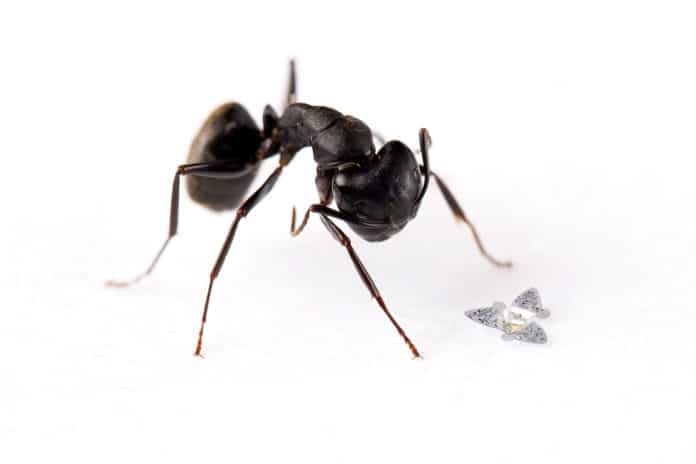Northwestern University engineers have added a new capability to electronic microchips – the power of flight. The team has created winged microchip (or “microflier”) – what they described as “the smallest-ever human-made flying structures” – that can take to the skies and be used to track all sorts of things in the wind, whether it be air pollution, airborne disease or environmental contamination.
About the size of a grain of sand, the new flying microchip does not have a motor or engine. Instead, it catches flight on the wind, much like a spinning maple tree seed, and spins like a helicopter through the air toward the ground.
By studying wind-dispersed seeds, engineers optimized the microflier’s aerodynamics to ensure that when dropped from a height, it falls at a slow velocity in a controlled manner. This allows for dispersal over a broad area and increases the amount of time it interacts with the air, making it ideal for monitoring air pollution and airborne disease.
“Our goal was to add a winged flight to small-scale electronic systems, with the idea that these capabilities would allow us to distribute highly functional, miniaturized electronic devices to sense the environment for contamination monitoring, population surveillance or disease tracking,” said Northwestern’s John A. Rogers, who led the device’s development.
These microfliers – shaped like tiny propellers – also can be packed with ultra-miniaturized technology, including sensors, power sources, antennas for wireless communication, and embedded memory to store data.
For their study, the researchers designed their tiny devices to have similar aerodynamics, based on computer modeling of how a variety of seeds fly. The resulting microfliers comprise two parts: millimeter-sized electronic functional components and their wings. As the microflier falls through the air, its wings interact with the air to create a slow, stable rotational motion. The weight of the electronics is distributed low in the center of the microflier to prevent it from losing control and chaotically tumbling to the ground.
So far, versions of the tiny devices have been outfitted with air pollution sensors, a PH sensor to monitor water quality, and photodetectors to measure sun exposure at different wavelengths.
The team imagines that large numbers of devices could be dropped from a plane or building and broadly dispersed to monitor environmental remediation efforts after a chemical spill or to track air pollution levels at various altitudes.
Rogers and his team are working on winged microchips made with materials that can harmlessly dissolve in water after they are no longer needed, providing a nifty solution to the issue of cleaning up the electronic litter.
“We fabricate such physically transient electronics systems using degradable polymers, compostable conductors, and dissolvable integrated circuit chips that naturally vanish into environmentally benign end products when exposed to water,” Roger said. “We recognize that recovery of large collections of microfliers might be difficult. To address this concern, these environmentally resorbable versions dissolve naturally and harmlessly.”
